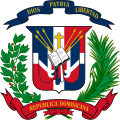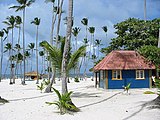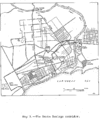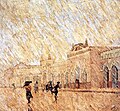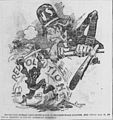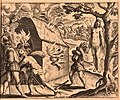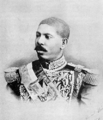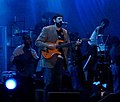Portal:Dominican Republic
Introduction
The Dominican Republic is a North American country located on the island of Hispaniola in the Greater Antilles of the Caribbean Sea in the North Atlantic Ocean. It shares a maritime border with Puerto Rico to the east and a land border with Haiti to the west, occupying the eastern five-eighths of Hispaniola which, along with Saint Martin, is one of only two islands in the Caribbean shared by two sovereign states. In the Antilles, the country is the second-largest nation by area after Cuba at 48,671 square kilometers (18,792 sq mi) and second-largest by population after Haiti with approximately 11.4 million people in 2024, of whom 3.6 million reside in the metropolitan area of Santo Domingo, the capital city. The Dominican Republic has the largest economy in the Caribbean and the seventh-largest in Latin America. Over the last 25 years, the Dominican Republic has had the fastest-growing economy in the Western Hemisphere – with an average real GDP growth rate of 5.3% between 1992 and 2018. GDP growth in 2014 and 2015 reached 7.3 and 7.0%, respectively, the highest in the Western Hemisphere. Recent growth has been driven by construction, manufacturing, tourism, and mining. The country is the site of the third largest (in terms of production) gold mine in the world, the Pueblo Viejo mine. The Dominican Republic is the most visited destination in the Caribbean. A geographically diverse nation, the Dominican Republic is home to both the Caribbean's tallest mountain peak, Pico Duarte, and the Caribbean's largest lake and lowest point, Lake Enriquillo. The island has an average temperature of 26 °C (78.8 °F) and great climatic and biological diversity. The country is also the site of the first cathedral, castle, monastery, and fortress built in the Americas, located in Santo Domingo's Colonial Zone, a World Heritage Site. (Full article...) Selected article -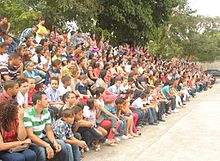 The culture of the Dominican Republic is a diverse mixture of different influences from around the world. The Dominican people and their customs have origins consisting predominantly in a European cultural basis, with native Taíno and African influences. The Dominican Republic was the site of the first European settlement in the Western Hemisphere, namely Santo Domingo founded in 1493. As a result of over five centuries of Spanish presence in the island, the core of Dominican culture is derived from the culture of Spain. The European inheritances include ancestry, language, traditions, law, the predominant religion and the colonial architectural styles. Soon after the arrival of Europeans, African people were imported to the island to serve as slave labor. The fusion of European, native Taino, and African traditions and customs contributed to the development of present-day Dominican culture. (Full article...) General images -The following are images from various Dominican Republic-related articles on Wikipedia.
Selected picture -Selected biography -Yamilet Peña Abreu (born 4 December 1992 in Santo Domingo) is an elite artistic gymnast from the Dominican Republic who won a gold medal at the 2014 World Challenge Cup and the 2012 Pan American Championship in vault and a bronze medal at the 2012 World Cup. She is known for her execution of the Produnova—a handspring double front on vault. She qualified for the vault finals at the 2012 Summer Olympics and the 2011 and the 2013 World Championships. Peña won a silver medal in vault during the IV ALBA Games and qualified for the finals in the same apparatus at the 2010 Central American and Caribbean Games and the 2011 Pan American Games. Peña won the women's artistic gymnastics Athlete of the Year by the Dominican Republic Olympic Committee from 2008 to 2013. (Full article...) Related portalsWikiProjects
Things to do
Associated WikimediaThe following Wikimedia Foundation sister projects provide more on this subject:
SourcesDiscover Wikipedia using portals | |||||||||||||||||||||||||

